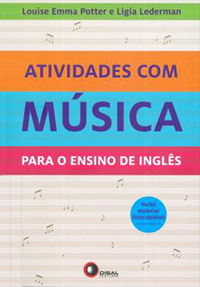How many questions have you asked your students today? Have you ever reflected upon the quality of your questions or thought about the kind of answers you expect to get?
Questioning can be an enormously powerful weapon for a teacher, however, it can also be equally ineffective if not applied with clear goals.
Studies have shown that teachers ask up to 400 questions every day. I wonder what sort of answers they get. The thing is, questioning is part of the classroom language. However, the kind of questions we are asking our students is what is at stake here.
Why are questions so important in the classroom? Who is supposed to be asking the questions? What kind of questions are we asking?
The most commonly asked questions in a classroom are normally for the following reasons:
Cotton (2001) outlined some functions of questioning and states that ‘Instruction which includes posing questions is more effective in producing achievement gains than instruction carried out without questioning students’.
Questions normally fall back into two different categories: Higher cognitive questioning and lower cognitive questioning.
Higher cognitive questioning is crucial to promote higher order thinking, creativity and to develop learning. When asked these sort of questions, students need to support their answer by digging into their brain for further information they might have regarding the topic, making connections to prior knowledge by applying logic and understanding. This kind of questioning is also called open ended, interpretive or inquiry questions.
However, teachers tend to stay on the safe side and go for lower cognitive questions. The latter is not a bad choice, if your main goal is to impart factual knowledge or test your students’ memory regarding an important historical fact, the use of a valuable grammar point in the language, or relate to dates, definitions, etc. These questions are also referred to as closed, direct or knowledge questions. Teachers normally favour this kind of questioning due to lack of time in the classroom, as they need to cover a certain number of topics in a short period of time. Students can answer these questions promptly, without putting much thought into them.
Again, research conducted by Cotton (2001) and Hattie (2012) showed that:
Having a clear goal of what you intend to achieve during your class and acknowledging the variety of different answers we can get depending on the questions we ask in the classroom can make an enormous difference to how our students react to the topic of our classes. Questions can demotivate and set students off to sleep or motivate and foster critical thinking. Higher cognitive questioning tends to fall into the latter, enhancing our students’ motivation. Looking back at the research conducted by Cotton and Hattie, we seem to be demotivating our students by not challenging them with higher cognitive inquiries. (60% of questions asked are lower cognitive questions).
An interesting classroom research teachers can conduct during the school year, is to observe and reflect upon their own classroom questioning techniques by having a peer observe their classes and take notes of the most common questions asked during the class. Having done that, one can analyse the types of questions, by using the chart below to classify the most commonly used questions. I find that having these verbs from the chart below at hand during classes helps me control my levels of questions according to what I expect my students to answer and accomplish during the class. Having clear goals in your mind before your class, whether you would like your students to compare, name, describe, understand or create during the class (your choice between using higher cognitive questions or lower cognitive questions) is a promising path for improving the effectiveness of classroom instruction and the chances of achieving your goals should increase dramatically.

On the one hand, categorising your questions is a crucial aspect in order to enhance your students’ motivation and engagement in the class. On the other hand, when you realise your students have the ability to ask higher cognitive questions related to the topic you are addressing, this is surely a powerful indicator that they are in for a deeper understanding of the subject. Most of the time, building effective questions has a greater value and allows students to think further and critically rather than simply answering questions. However, we rarely allow the time for students to build their questions, let alone, higher cognitive questions.
Apart from the actual questioning part of the class, there are some relevant strategies to keep in mind:
Keep in mind that questioning is an enormously powerful weapon to use in the classroom, as long as it is done with a purpose. It will not only help students think more critically, but will also guide you towards a more engaging and motivating class. Food for thought.
REFERENCES
Bloom, Benjamin (ed). Taxonomy of Educational Objectives. Vol. 1: Cognitive Domain. New York: McKay, 1956.
Asking Effective questions. University of Chicago.
https://teaching.uchicago.edu/teaching-guides/asking-effective-questions/
Cotton , K (2001). Classroom Questioning.
http://learner3.learner.org/workshops/socialstudies/pdf/session6/6.ClassroomQuestioning.pdf
Hattie. J (2012). Visible Learning for Teachers: Maximizing Impact on Learning
LIVRO RECOMENDADO
